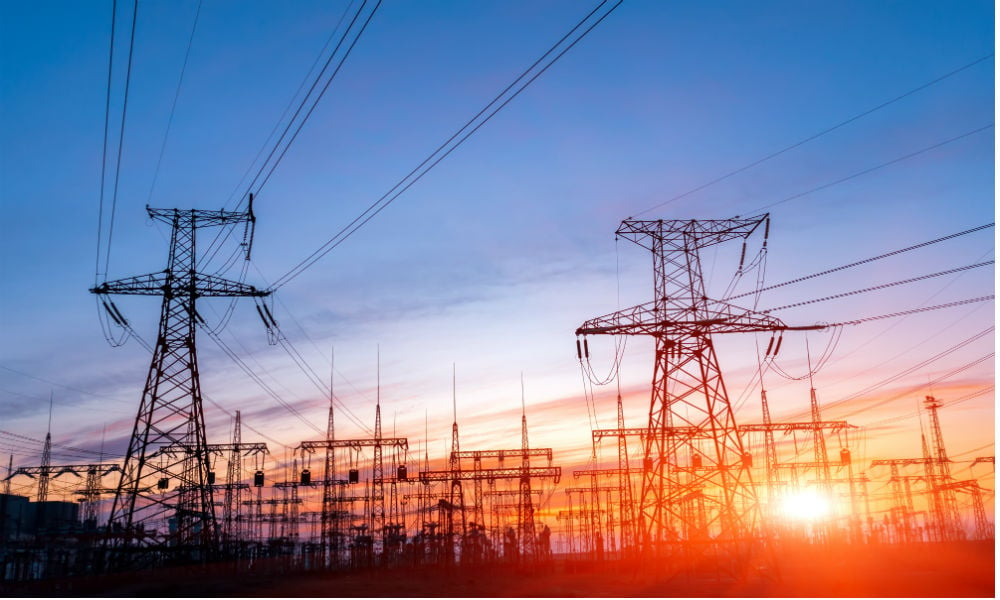Why Critical Infrastructure Real Time Connectivity is Moving to SDN, Controlling the Internet While Connecting Assets on the Power Grid

Less than two years after implementing a secure, real-time, programmable networking platform for the California Independent System Operator (Cal-ISO), Dispersive Networks announced another expansion of its presence in the region.
Dispersive was selected by the Yuba Water Agency (YWA), which owns and operates the fifth-tallest dam in the U.S., to connect its renewable energy assets to the Cal-ISO system.
YWA joins Humboldt Redwood Company and Greenleaf Power LLC as the third renewable energy generator to make the move to Dispersive’s CI-SDN since the regional grid operator approved it as an option less than two years ago.
Dispersive is providing a fully managed SaaS connectivity solution based on its Critical Infrastructure Software-Defined Network (CI-SDN). The company is using mission-critical programmable networking to provide ultra-secure, real-time and high-performance data transport between Yuba and the Regional ISO.
Dispersive’s software-defined programmable networking enables grid operators to manage network resources centrally while benefiting from built-in security and brings Cal-ISO and their members and partners the flexibility to connect the growing number of renewables in the grid and secure communications across the entire infrastructure, including distributed energy devices.
Dispersive splits session-level IP traffic into smaller independent packet streams and sends each stream on a different path, reducing the likelihood of successful cyber hacks as the networked power grid broadens, an approach that has been proven in the electrical energy industry, while also having been implement in the military, government, healthcare and other “mission critical” industries as nearly all physical assets are being digitized and connected.
The company says its unique approach makes possible asset visibility from the bulk systems to grid edge (with North American Electric Reliability Corporation or NERC-CIP cybersecurity controls) in a highly secure manner.
The NERC is a nonprofit international regulatory authority whose responsibility is to safeguard the reliability of the North American bulk power systems. The United States of America, Canada and a part of Baja California in Mexico comes under the responsibility of NERC and power system operators in that region need to meet its security standards which includes network scanning for security vulnerabilities.
NERC Critical Infrastructure Protection (NERC-CIP) is a set of standards which specifies minimum security requirements for the bulk power systems. NERC-CIP imposes rules which address power system security, including testing and repairing security issues of critical assets with vulnerability assessment tools such as Automated Vulnerability Detection System (AVDS).
Security is one aspect of the approach; operational efficiency is another. According to the company’s website, Dispersive’s Virtual Network enables resource owners to connect to the grid over the Internet
“in just hours instead of over private networks in months.”
They claim it also eliminates the need for resource owners to manage PKI certificates, and treats communications links as one logical pipe to enhance resiliency and ensure path diversity.
Dispersive's CI-SDN was used to replace a T-1 line connection, which was both unreliable and inefficient. CI-SDN enables resource owners to connect to the grid over a range of connection types, including private circuits, wireless, and broadband to the internet, with a 100% software-defined network. Programmable networking enhances resiliency by virtualizing any combination of connections as one logical pipe.
The solution securely transports SCADA data to the California grid. YWA benefits from ultra-secure data transport between its energy assets with the flexibility and cost-efficiency of SDN. Dispersive Networks' carrier-grade programmable networking splits session-layer IP traffic into independent encrypted streams that automatically change keys and paths. This mitigates the threat of network eavesdropping, data intercept and denial-of-service attacks.
"Renewables are transforming the energy sector and at the same time driving the need for new networking models," said Edward J. Wood, President and CEO, Dispersive Networks. "Our programmable networking offers new levels of security, reliability and performance as new types of assets add more complexity to the grid and create new cybersecurity challenges. Our work with YWA demonstrates the value that secure, real-time connectivity can deliver for energy businesses of all kinds and shows how networking can be a driver for optimizing the energy grid."
The YWA is a public agency that serves the people of Yuba County, California. The agency's primary missions are flood risk reduction, water supply reliability, fish habitat protection and enhancement, hydroelectric generation, and recreation at New Bullards Bar. It owns and operates facilities with a capacity of storing approximately one million acre-feet of water and generating nearly 400 megawatts of hydropower.
"The legacy approach to networking was directly impacting our bottom line and could not deliver the uptime we required," said David DeVore, Information Systems Manager at YWA. "We needed a new approach that better matched our needs and could evolve with our operations. Dispersive was able to offer us a radically different managed network solution that ensures both security and mission-critical availability."
The deployment was implemented in partnership with Pacific Power Engineers (PPE).
PPE works with government, utilities, military, and private enterprises. Their skilled engineers and technicians offer a range of services in protection relays, arc flash, CAISO revenue metering, project management, and more.
Christian Arechavaleta, Systems Integration Engineer at Pacific Power Engineers, said, "Since Dispersive™ CI-SDN requires only a standard broadband connection to the Internet, it's much easier and less expensive to install than a T-1 line. The network can be deployed in days rather than weeks, enabling utilities and renewable energy facilities to generate electricity – and income – much faster."
The California Independent System Operator is a non-profit Independent System Operator serving California. It oversees the operation of California's bulk electric power system, transmission lines, and electricity market generated and transmitted by its member utilities.
Arti Loftus is an experienced Information Technology specialist with a demonstrated history of working in the research, writing, and editing industry with many published articles under her belt.
Edited by Maurice Nagle

